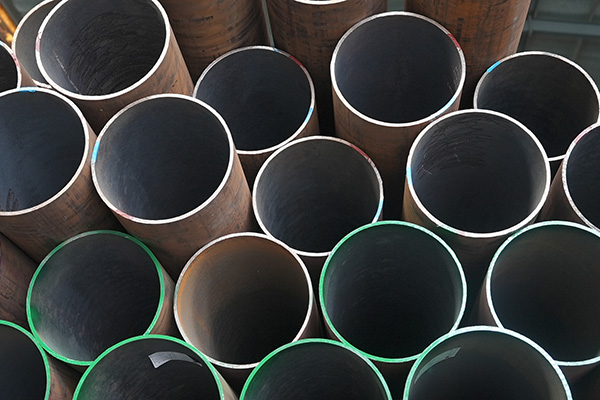

The hot expansion process is a manufacturing technique used to enlarge the diameter of seamless steel pipes while maintaining (or improving) their mechanical properties. This method is essential for producing large-diameter pipes from smaller billets without welding. Below is a detailed explanation of its working principles, key stages, and technical considerations.
1. Fundamental Concept
Hot expansion involves thermally and mechanically expanding a smaller-diameter seamless pipe to a larger size by heating it to a plastic deformation temperature and applying radial pressure. The process ensures:
Uniform wall thickness (minimizing eccentricity).
Preservation of metallurgical integrity (no welding defects).
Improved grain structure due to recrystallization during heating.
2. Key Process Stages
A. Heating
Temperature Range: Typically 850–1,200°C (depending on steel grade).
Carbon steels: ~1,100°C
Alloy steels: Higher to avoid cracking.
Heating Method: Induction heating or gas-fired furnaces for uniform heat distribution.
Purpose: Softens the steel to enable plastic deformation without cracking.
B. Expansion
Mechanical Methods:
Mandrel (Plug) Expansion: A tapered mandrel is pushed/pulled through the heated pipe, forcing it to expand radially.
Hydraulic Expansion: High-pressure fluid is injected inside the pipe to stretch it against a constraining die.
Roller Expansion: Rotating rollers apply radial pressure to gradually increase diameter.
Expansion Ratio: Usually 10–40% (exceeding this risks wall thinning or defects).
C. Cooling & Sizing
Controlled Cooling: Slow cooling (annealing) or quenching (for specific properties).
Sizing Rolls: Calibrate final dimensions and roundness.
D. Post-Processing
Straightening: Corrects deformations using rotary straighteners.
Heat Treatment: Stress relief or normalizing to restore mechanical properties.
Surface Treatment: Descaling (e.g., shot blasting) and anti-rust coatings.
3. Metallurgical Principles
Recrystallization: Heating above the recrystallization temperature (~0.5× melting point) refines grain structure, enhancing ductility.
Work Hardening Mitigation: Hot working avoids brittleness caused by cold deformation.
Residual Stress Reduction: Uniform expansion minimizes internal stresses.
4. Advantages vs. Alternatives
Hot Expansion
Alternative (Welded Pipes)
No weld seams → Better pressure resistance Weld seams are potential weak points
Uniform grain structure Heat-affected zones (HAZ) in welded pipes
Suitable for high-temperature service Limited by weld integrity
5. Quality Control Challenges
Wall Thinning: Excessive expansion reduces thickness; monitored via ultrasonic testing.
Ovality/Collapse: Improper mandrel alignment causes irregular shapes.
Surface Defects: Scaling or cracks due to overheating/cooling rates.
6. Applications
Oil & Gas: Large-diameter pipelines.
Power Plants: Boiler tubes requiring high-temperature strength.
Nuclear/Chemical: Corrosion-resistant alloy pipes.
7. Critical Parameters
Temperature Control: Prevents overheating (burning) or underheating (cracking).
Expansion Speed: Too fast → tearing; too slow → productivity loss.
Tool Design: Mandrel/roller geometry affects dimensional accuracy.





